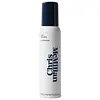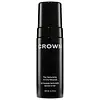What's inside
What's inside
 Key Ingredients
Key Ingredients

 Benefits
Benefits

 Concerns
Concerns

 Ingredients Side-by-side
Ingredients Side-by-side

Water
Skin ConditioningIsobutane
Vp/Va Copolymer
Polyquaternium-11
Propane
Phenoxyethanol
PreservativeCocamidopropyl Betaine
CleansingEthylhexylglycerin
Skin ConditioningAmodimethicone
Trideceth-12
EmulsifyingCetrimonium Chloride
AntimicrobialPolyquaternium-70
Dipropylene Glycol
HumectantFructose
HumectantPentylene Glycol
Skin ConditioningGlycerin
HumectantSodium Hyaluronate
HumectantSodium Citrate
BufferingPolyporus Umbellatus Extract
Skin ProtectingPinus Sylvestris Cone Extract
MaskingSodium Benzoate
MaskingParfum
MaskingLinalool
PerfumingAmyl Cinnamal
PerfumingHydroxycitronellal
PerfumingGeraniol
PerfumingHexyl Cinnamal
PerfumingCitronellol
PerfumingLimonene
PerfumingWater, Isobutane, Vp/Va Copolymer, Polyquaternium-11, Propane, Phenoxyethanol, Cocamidopropyl Betaine, Ethylhexylglycerin, Amodimethicone, Trideceth-12, Cetrimonium Chloride, Polyquaternium-70, Dipropylene Glycol, Fructose, Pentylene Glycol, Glycerin, Sodium Hyaluronate, Sodium Citrate, Polyporus Umbellatus Extract, Pinus Sylvestris Cone Extract, Sodium Benzoate, Parfum, Linalool, Amyl Cinnamal, Hydroxycitronellal, Geraniol, Hexyl Cinnamal, Citronellol, Limonene
Water
Skin ConditioningGlycerin
HumectantIsopentyldiol
HumectantPanthenol
Skin ConditioningHydrolyzed Carrot Protein/Hydrolyzed Kale Protein/Hydrolyzed Lemon Protein Extract
Limnanthes Alba Seed Oil
Skin ConditioningCamellia Japonica Seed Oil
EmollientAloe Barbadensis Leaf Juice
Skin ConditioningTamarindus Indica Fruit Extract
Skin ConditioningLeuconostoc/Radish Root Ferment Filtrate
AntimicrobialTocopheryl Acetate
AntioxidantSodium Chloride
MaskingCocamidopropyl Betaine
CleansingGuar Hydroxypropyltrimonium Chloride
Skin ConditioningCaprylyl Glycol
EmollientEthylhexylglycerin
Skin ConditioningParfum
MaskingPolyglyceryl-6 Ricinoleate
EmulsifyingPolyglyceryl-6 Caprylate
EmulsifyingPolyglyceryl-4 Caprate
EmulsifyingPolyglyceryl-3 Cocoate
EmulsifyingHydroxypropyl Methylcellulose
Emulsion StabilisingUndecylenoyl Glycine
CleansingCapryloyl Glycine
CleansingCinnamidopropyltrimonium Chloride
Citric Acid
BufferingCitral
PerfumingLimonene
PerfumingLinalool
PerfumingWater, Glycerin, Isopentyldiol, Panthenol, Hydrolyzed Carrot Protein/Hydrolyzed Kale Protein/Hydrolyzed Lemon Protein Extract, Limnanthes Alba Seed Oil, Camellia Japonica Seed Oil, Aloe Barbadensis Leaf Juice, Tamarindus Indica Fruit Extract, Leuconostoc/Radish Root Ferment Filtrate, Tocopheryl Acetate, Sodium Chloride, Cocamidopropyl Betaine, Guar Hydroxypropyltrimonium Chloride, Caprylyl Glycol, Ethylhexylglycerin, Parfum, Polyglyceryl-6 Ricinoleate, Polyglyceryl-6 Caprylate, Polyglyceryl-4 Caprate, Polyglyceryl-3 Cocoate, Hydroxypropyl Methylcellulose, Undecylenoyl Glycine, Capryloyl Glycine, Cinnamidopropyltrimonium Chloride, Citric Acid, Citral, Limonene, Linalool
Ingredients Explained
These ingredients are found in both products.
Ingredients higher up in an ingredient list are typically present in a larger amount.
Cocamidopropyl Betaine is a fatty acid created by mixing similar compounds in coconut oil and dimethylaminopropylamine, a compound with two amino groups.
This ingredient is a surfactant and cleanser. It helps gather the dirt, pollutants, and other impurities in your skin to be washed away. It also helps thicken a product and make the texture more creamy.
Being created from coconut oil means Cocamidopropyl Betaine is hydrating for the skin.
While Cocamidopropyl Betaine was believed to be an allergen, a study from 2012 disproved this. It found two compounds in unpure Cocamidopropyl Betaine to be the irritants: aminoamide and 3-dimethylaminopropylamine. High-grade and pure Cocamidopropyl Betaine did not induce allergic reactions during this study.
Learn more about Cocamidopropyl BetaineEthylhexylglycerin (we can't pronounce this either) is commonly used as a preservative and skin softener. It is derived from glyceryl.
You might see Ethylhexylglycerin often paired with other preservatives such as phenoxyethanol. Ethylhexylglycerin has been found to increase the effectiveness of these other preservatives.
Glycerin is already naturally found in your skin. It helps moisturize and protect your skin.
A study from 2016 found glycerin to be more effective as a humectant than AHAs and hyaluronic acid.
As a humectant, it helps the skin stay hydrated by pulling moisture to your skin. The low molecular weight of glycerin allows it to pull moisture into the deeper layers of your skin.
Hydrated skin improves your skin barrier; Your skin barrier helps protect against irritants and bacteria.
Glycerin has also been found to have antimicrobial and antiviral properties. Due to these properties, glycerin is often used in wound and burn treatments.
In cosmetics, glycerin is usually derived from plants such as soybean or palm. However, it can also be sourced from animals, such as tallow or animal fat.
This ingredient is organic, colorless, odorless, and non-toxic.
Glycerin is the name for this ingredient in American English. British English uses Glycerol/Glycerine.
Learn more about GlycerinLimonene is a fragrance that adds scent and taste to a formulation.
It's found in the peel oil of citrus fruits and other plants such as lavender and eucalyptus. The scent of limonene is generally described as "sweet citrus".
Limonene acts as an antioxidant, meaning it helps neutralize free radicals.
When exposed to air, oxidized limonene may sensitize the skin. Because of this, limonene is often avoided by people with sensitive skin.
The term 'fragrance' is not regulated in many countries. In many cases, it is up to the brand to define this term. For instance, many brands choose to label themselves as "fragrance-free" because they are not using synthetic fragrances. However, their products may still contain ingredients such as essential oils that are considered a fragrance.
Learn more about LimoneneLinalool is a fragrance and helps add scent to products. It's derived from common plants such as cinnamon, mint, citrus, and lavender.
Like Limonene, this ingredient oxidizes when exposed to air. Oxidized linalool can cause allergies and skin sensitivity.
This ingredient has a scent that is floral, spicy tropical, and citrus-like.
Learn more about LinaloolParfum is a catch-all term for an ingredient or more that is used to give a scent to products.
Also called "fragrance", this ingredient can be a blend of hundreds of chemicals or plant oils. This means every product with "fragrance" or "parfum" in the ingredients list is a different mixture.
For instance, Habanolide is a proprietary trade name for a specific aroma chemical. When used as a fragrance ingredient in cosmetics, most aroma chemicals fall under the broad labeling category of “FRAGRANCE” or “PARFUM” according to EU and US regulations.
The term 'parfum' or 'fragrance' is not regulated in many countries. In many cases, it is up to the brand to define this term.
For instance, many brands choose to label themselves as "fragrance-free" because they are not using synthetic fragrances. However, their products may still contain ingredients such as essential oils that are considered a fragrance by INCI standards.
One example is Calendula flower extract. Calendula is an essential oil that still imparts a scent or 'fragrance'.
Depending on the blend, the ingredients in the mixture can cause allergies and sensitivities on the skin. Some ingredients that are known EU allergens include linalool and citronellol.
Parfum can also be used to mask or cover an unpleasant scent.
The bottom line is: not all fragrances/parfum/ingredients are created equally. If you are worried about fragrances, we recommend taking a closer look at an ingredient. And of course, we always recommend speaking with a professional.
Learn more about ParfumWater. It's the most common cosmetic ingredient of all. You'll usually see it at the top of ingredient lists, meaning that it makes up the largest part of the product.
So why is it so popular? Water most often acts as a solvent - this means that it helps dissolve other ingredients into the formulation.
You'll also recognize water as that liquid we all need to stay alive. If you see this, drink a glass of water. Stay hydrated!
Learn more about Water